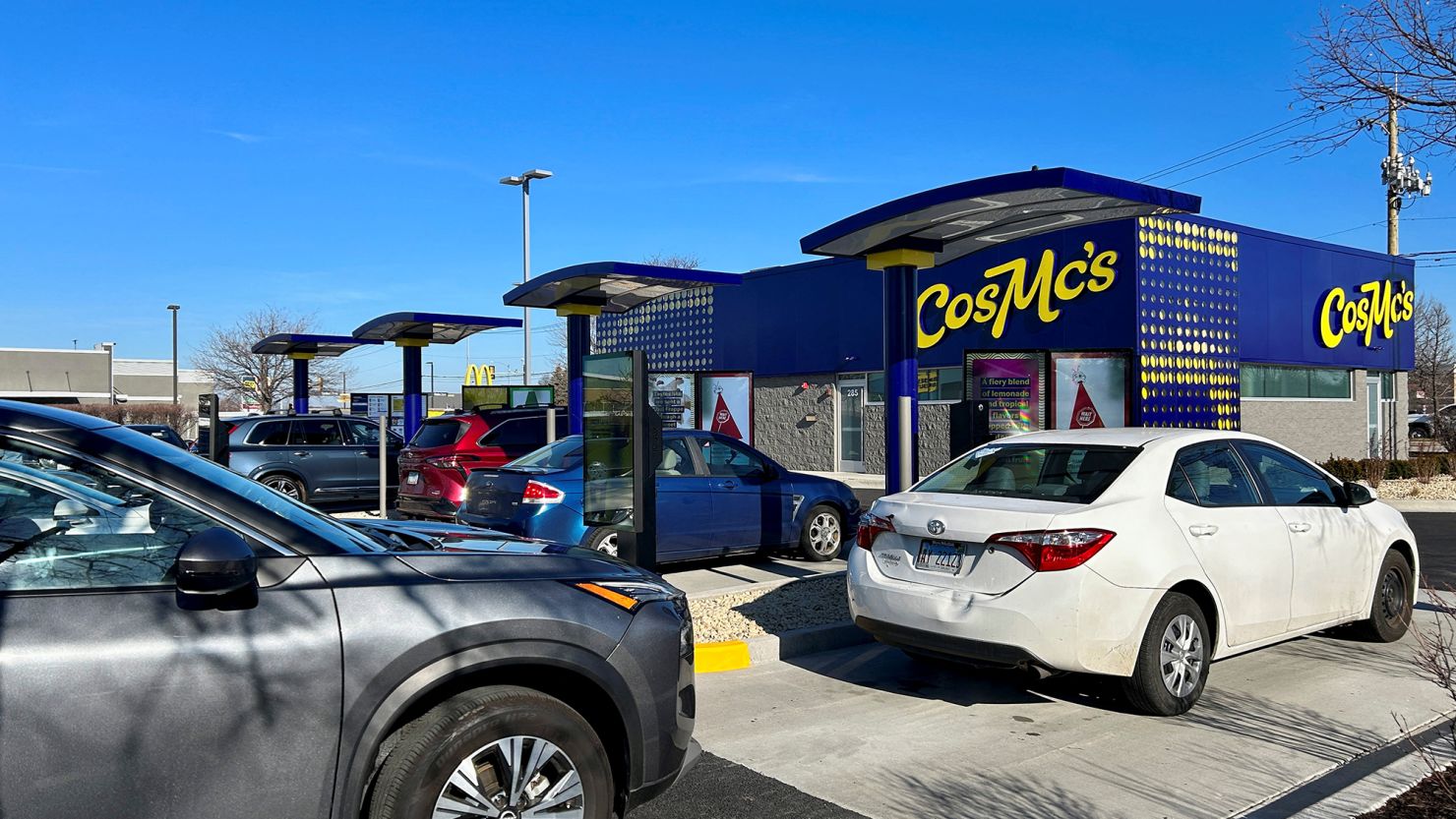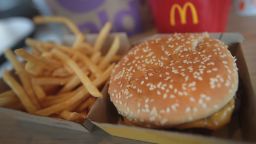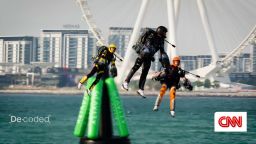McDonald’s announced on Wednesday that it is piloting a new cafe concept called CosMc’s, which will mostly sell indulgent, highly customizable caffeinated beverages with some food. The first CosMc’s location is now open in Illinois, and nine more are planned in Texas in the coming months.
For many, the news probably raised one main question: Why? Why is a chain that’s basically synonymous with burgers suddenly interested in selling sugary coffee drinks? And why not just add those options to the menu at existing McDonald’s locations, rather than launch an entirely new brand?
And, perhaps most pressingly, why name it CosMc’s?
Those are head scratchers, at first. But there are a few good reasons for McDonald’s to take this approach.
Beverages are a lucrative market, and those wildly customizable coffee drinks – like the kind Starbucks is known for – especially so.
“There’s no category that has really performed better this year than specialty coffee,” said David Portalatin, senior vice president and food industry advisor at Circana, who noted that sales of specialty coffee at quick-service restaurants have risen this year compared to last.
But you can’t just plop a bunch of customizable coffee drinks onto the McDonald’s menu. Doing that would slow down kitchens and service times, and could confuse customers.
So to try to break into the market without messing up its regular business, McDonald’s is giving something totally new a shot.
Why McDonald’s wants in on specialty coffee
You might think that burgers are king at McDonald’s, and drinks little more than water, sugar and flavorings. But for restaurants, drinks — especially those kinds — are cash cows.
“The profit margin on a beverage is just humongous,” said John Gordon, founding partner of Pacific Management Consulting Group, which advises restaurants. A restaurant can see a gross profit margin of up to around 80% when selling beverages, he said — far higher than the margin for food. Plus, he added, when people visit a cafe for a drink, they often end up buying something to eat, as well.
And in the US, coffeeshops are a growing category, he said. “McDonald’s doesn’t want to be left behind.”
Beyond being left behind, McDonald’s is always looking to grow the business in new ways, even as Americans are already intimately familiar with the Big Mac.
During an investor event on Wednesday, McDonald’s CEO Chris Kempczinski said that “One area of focus has been identifying ways for McDonald’s to participate in attractive and fast-growing categories … we’ve honed in on specialty beverages and coffee.” McDonald’s, he said, could use specialty coffee to help it compete in the afternoons, using caffeine and sugar to entice people to come in for a pick-me-up between meals.
McDonald’s already serves coffee at its locations. But it doesn’t have the types of customizable espresso drinks, teas and other beverages that have helped raise sales for places like Starbucks.
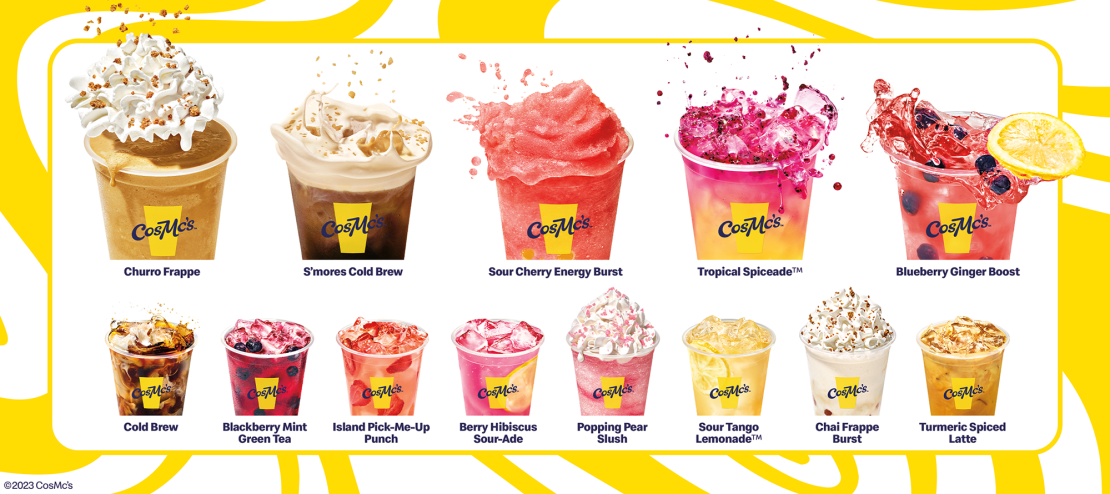
CosMc’s menu is full of them. Take, for example, the chai frappe burst, made with boba, whipped cream and cinnamon sprinkles. Customers can keep or ditch those items and add toffee sprinkles or “black pepper sprinkles,” according to the CosMc’s site. They can also add up to four espresso shots, a drizzle of caramel and/or chocolate, up to two types of flavored syrups and even a “boost” shot of vitamin c.
But McDonald’s can’t just start selling triple-shot chai frappe bursts — hold the whipped cream, add a pump of vanilla and chocolate drizzle — at regular McDonald’s locations. Kempczinski himself said on Wednesday they’re just too complicated for McDonald’s kitchens.
“Handcrafted beverages, customizations — things like that aren’t going to work at scale in a McDonald’s,” noted Joshua Long, a managing director and restaurant research analyst at Stephens. “And so they have to do it in a separate environment.”
Protecting the Arches
In recent years, McDonald’s has been focusing on reducing complexity for its workers. One way to do that is by focusing instead on its main menu items. Many of its most successful recent marketing campaigns — like the adult Happy Meal and celebrity meals platform — have offered McDonald’s items in different configurations, with maybe a few new sauces or toys. Focusing on the basics has helped McDonald’s increase sales.
Testing out a new line of complicated beverages would threaten those efforts. So by trying them out in a new concept that is affiliated with, but separate from McDonald’s, the company can experiment without risking disappointing its customers, or frustrating workers.
“They’re safeguarding the main brand by doing this in its own concept,” Long said.
But none of that explains why CosMc’s takes its name from an obscure McDonald’s character.
Who is CosMc, anyway?
CosMc’s is named after CosMc, a little-known McDonald’s character from the 1980s that Kempczinski on Wednesday described as “part alien, part surfer, part robot.”
CosMc doesn’t have the cachet of, say, the Hamburglar or Grimace. But that may be the point, said Stephen Zagor, an adjunct professor at Columbia Business School who specializes in restaurants and food businesses.
“Because it is so unknown, it has a neutral response for customers,” Zagor said. “We’re starting with a blank slate.”
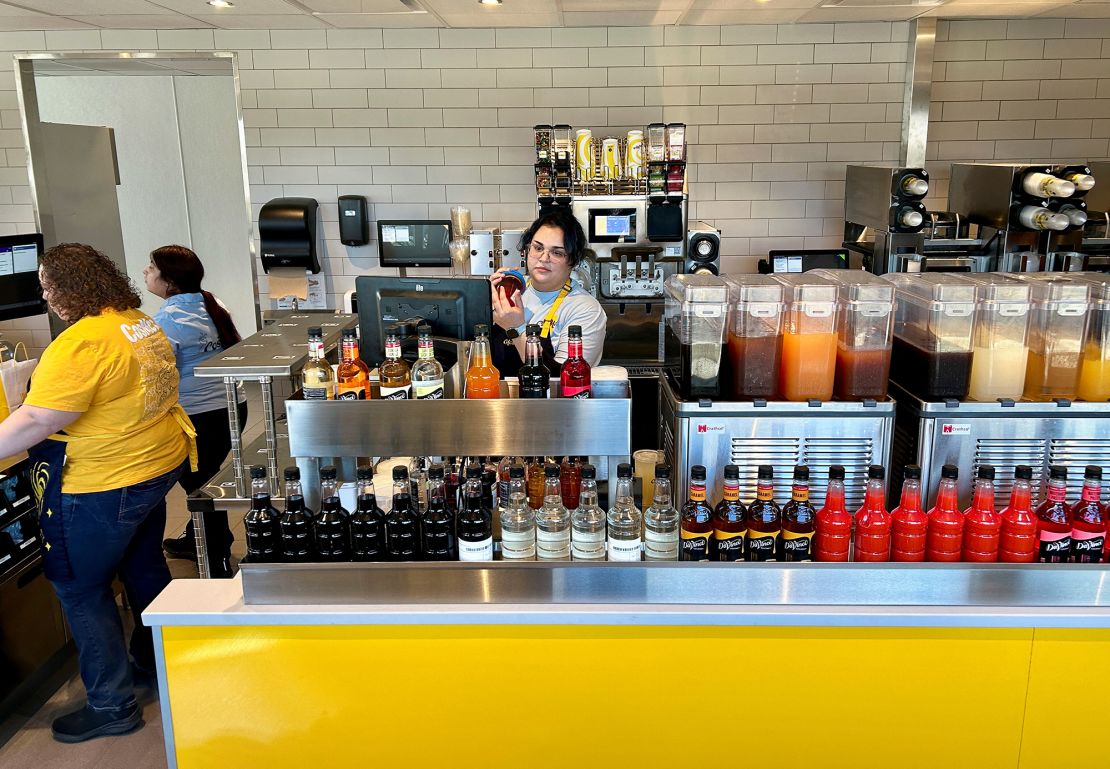
Still, there are plenty of signals to show customers that they’re visiting a location that is connected to McDonald’s.
“They’re using the golden arch, they’re using the terminologies. They’re using a lot of the logo colors that have made them successful,” Zagor said. Some of the food will be familiar to McDonald’s customers, too. A section of the online menu called “from the McDonald’s universe” includes Egg McMuffins and McFlurries, for example.
Still, “starting any business is risky, even for somebody that’s as experienced as McDonald’s,” Zagor said. “You’re trying to establish a whole new relationship,” with customers, he said. “And there’s always a chance that it’s not going to work.”
But for McDonald’s, there’s not much actual risk.
Low risk, high reward
During Wednesday’s event, Kempczinski stressed that the test is extremely limited. “Please, let me emphasize again, we’re talking about 10 stores,” he said.
For McDonald’s, which has about 41,000 locations worldwide, and wants to up that number to 50,000 by 2027, operating 10 stores is a drop in the bucket, financially. “This is a rounding error,” said David Henkes, senior principal at the research firm Technomic.
But it gives McDonald’s the opportunity to take risks it wouldn’t in McDonald’s locations.
“The value of CosMc’s is not necessarily in creating a new concept,” Henkes said. “It’s in the learning. And being free to learn, experiment, fail, try it again.”
McDonald’s could learn that there’s real money to be made, scale up the business and take on competitors like Starbucks and others. It might learn how to make customized drinks efficiently enough to bring them into its own kitchens. Or it could have takeaways from CosMc’s layout (the Illinois location has four drive-thrus) or marketing. Or something else entirely.
“It’s kind of an incubator, in a way, to test things out and see what sticks,” Henkes said, noting that some of the findings could be unexpected. “That’s the beauty of doing something like this.”
